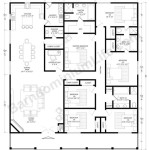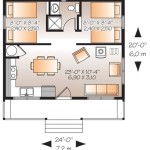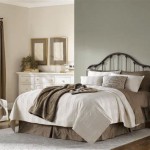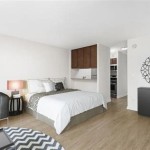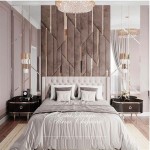Optimal Keyword Density: Balancing "Bedroom" in Your Content
The strategic integration of keywords into online content is a fundamental aspect of search engine optimization (SEO). One crucial element of this strategy revolves around keyword density—the frequency with which a target keyword appears within the text of a web page. While keyword density was historically a major ranking factor, modern search algorithms have evolved significantly, prioritizing content quality, relevance, and user experience over sheer keyword stuffing.
This article addresses the subject of how much to include the keyword "bedroom" in content. It provides an in-depth analysis of keyword density best practices and how to effectively incorporate the term "bedroom" into various types of content without negatively affecting search engine rankings or diminishing readability.
Determining the appropriate frequency for a particular keyword, such as "bedroom," requires a nuanced understanding of SEO principles and a focus on delivering valuable content to the target audience. The goal is to create text that is both optimized for search engines and engaging for human readers.
Understanding Keyword Density and its Evolution
Keyword density is calculated as the percentage of times a keyword appears relative to the total number of words on a page. For example, if the word "bedroom" appears 10 times in a 1000-word article, the keyword density would be 1%. In the early days of SEO, higher keyword densities were often associated with higher rankings. This led to the practice of "keyword stuffing," where content creators would excessively repeat target keywords in an attempt to manipulate search engine algorithms.
However, search engines like Google have implemented increasingly sophisticated algorithms that penalize keyword stuffing and prioritize content that is natural, informative, and user-friendly. These algorithms assess various factors beyond keyword frequency, including content quality, relevance to search intent, user engagement metrics (such as bounce rate and dwell time), and the presence of related terms and synonyms.
As a result, the optimal keyword density is no longer a fixed percentage but rather a contextual measure that depends on the specific topic, content type, and audience. A general guideline suggests maintaining a keyword density of around 1-2%, but this should be viewed as a starting point rather than a strict rule. The most important consideration is that the keyword integration should be seamless and not detract from the overall reading experience.
Strategies for Incorporating "Bedroom" Effectively
When incorporating the keyword "bedroom" into your content, consider the following strategies to ensure it is done effectively and naturally:
1. Focus on Relevance and Search Intent: Before even considering keyword density, it is essential to ensure that the content is genuinely relevant to the search queries users are likely to use when searching for information related to "bedroom." This means understanding the different types of searches that involve this keyword. Examples include: "bedroom furniture," "bedroom decor," "bedroom design ideas," "small bedroom organization," and "master bedroom suites." Address these different aspects of the topic to capture a wider range of relevant searches.
2. Use Synonyms and Related Terms: Avoid repeating the exact keyword "bedroom" excessively. Instead, use synonyms and related terms to vary your language and make the content more engaging. Examples include: "sleeping quarters," "chamber," "boudoir," "master suite," and "personal space." Incorporating these terms naturally not only prevents keyword stuffing but also broadens the semantic scope of the content, making it more appealing to search engines.
3. Integrate Keywords Naturally: The most crucial aspect of keyword integration is to ensure that it feels natural and seamless within the text. Avoid forcing the keyword into sentences where it does not fit organically. Instead, focus on crafting well-written, informative content that naturally incorporates the keyword where appropriate. Read the content aloud to identify any instances where the keyword sounds forced or repetitive.
4. Optimize Headings and Subheadings: Headings and subheadings play a vital role in content structure and readability, and they also provide opportunities to strategically incorporate the keyword "bedroom." Use the keyword in headings and subheadings where it is relevant to the section's content. For example: "Bedroom Design Trends for 2024," "Choosing the Right Bedroom Furniture," "Small Bedroom Organization Ideas."
5. Optimize Image Alt Text: Images are an integral part of online content, and optimizing their alt text is another way to incorporate the keyword "bedroom." Alt text is the descriptive text that appears when an image cannot be displayed. Use alt text to describe the image accurately and naturally incorporate the keyword where appropriate. For example, for an image of a modern bedroom, the alt text could be: "Modern bedroom design with minimalist furniture."
6. Optimize Meta Descriptions and Title Tags: The meta description and title tag are important HTML elements that provide a brief summary of the content on a page. These elements are displayed in search engine results pages (SERPs), and optimizing them with relevant keywords can improve click-through rates. Include the keyword "bedroom" in the meta description and title tag if it is relevant to the page's content. However, prioritize clarity and accuracy over keyword stuffing.
Contextual Application of "Bedroom" in Different Content Types
The optimal way to incorporate the keyword "bedroom" also depends on the type of content being created. Different content types have different purposes and target audiences, which require varying approaches to keyword integration.
1. Blog Posts: Blog posts typically offer in-depth information and insights on a specific topic. When writing a blog post about "bedroom design," for example, the keyword "bedroom" can be incorporated naturally throughout the article. Use the keyword in headings, subheadings, and body paragraphs where it is relevant. Also, consider using long-tail keywords such as "master bedroom remodel ideas" or "guest bedroom decor tips" to target more specific search queries.
2. Product Descriptions: Product descriptions aim to provide detailed information about a specific product. When describing a "bedroom set," the keyword "bedroom" should be used frequently but naturally throughout the description. Focus on highlighting the key features and benefits of the product, and use related terms such as "bed," "nightstand," "dresser," and "mattress" to provide a comprehensive overview.
3. Category Pages: Category pages are designed to organize products or content into specific categories. When creating a category page for "bedroom furniture," the keyword "bedroom furniture" should be prominently displayed in the page title, heading, and introductory paragraph. Use descriptive language to highlight the different types of bedroom furniture available, such as "beds," "dressers," "nightstands," and "mattresses."
4. Landing Pages: Landing pages are designed to convert visitors into leads or customers. When creating a landing page for a "bedroom design service," the keyword "bedroom" should be incorporated strategically throughout the page to emphasize the service's focus. Use the keyword in the headline, body copy, and call-to-action buttons to reinforce the message and encourage visitors to take the desired action.
5. Infographics: Infographics are visual representations of data or information. When creating an infographic about "bedroom design trends," the keyword "bedroom" should be included in the title, headings, and captions. Use visuals to illustrate key concepts and trends, and provide concise and informative text to support the visuals.
6. Video Scripts: When creating a video script about "bedroom organization," ensure that the keyword "bedroom" is incorporated naturally into the dialogue and narration. Use visuals to demonstrate different organization techniques, and provide clear and concise instructions to viewers.
7. Website Copy: All website copy, including the homepage, about us page, and contact page, should be optimized with relevant keywords. When describing a service related to "bedroom design and renovation", make sure related keywords are mentioned throughout the appropriate sections of the website, especially in sections about services the company offers.
In conclusion, incorporating the keyword "bedroom" effectively into content requires a balanced approach that prioritizes relevance, natural language, and user experience. By understanding the principles of keyword density and applying the strategies outlined above, content creators can optimize their content for search engines without sacrificing readability or engagement. Focusing on creating high-quality, informative content that meets the needs of the target audience is the most effective way to achieve long-term SEO success.

How Much Does It Cost To Add A Bedroom And Bathroom Angi

How Much Does Adding A Bedroom Increase Home Value

How Much Value Does An Extra Bedroom Add New Silver

How Much Value Does Adding A Bedroom Add To Your Home

How Much Does It Cost To Add A Bedroom You Could See 53 Roi

How Much Does An Extra Bedroom Add To A Home S Value Jb Kind

How Much Does An Extra Bedroom Add To Home Value

How Much Does It Cost To Add A Bedroom You Could See 53 Roi

How Much Does Adding A Bedroom Increase Home Value

How Much Value Does An Extra Bedroom Add New Silver

